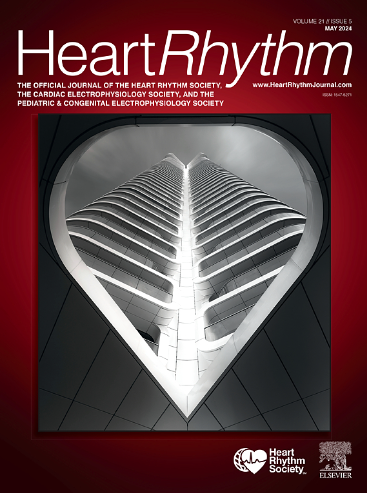Inequities in atrial fibrillation trials: An analysis of participant race, ethnicity, and sex over time
IF 5.6
2区 医学
Q1 CARDIAC & CARDIOVASCULAR SYSTEMS
引用次数: 0
Abstract
Background
Despite the importance of racial and ethnic representation in clinical trials, limited data exist about the enrollment trends of these groups in atrial fibrillation (AF) trials over time.
Objective
The purpose of this study was to examine the characteristics of contemporary AF clinical trials and to evaluate their association with race and ethnicity over time.
Methods
We performed a systematic search of all completed AF trials registered in ClinicalTrials.gov from conception to December 31, 2023, and manually extracted composition of race/ethnicity. We stratified trials by study characteristics, including impact factor, publication status, funding source, and location. We calculated the participation to prevalence ratio (PPR) by dividing the percentage of non-White participants by the percentage of non-White participants in the disease population (PPR of 0.8–1.2 suggests proportional representation) over time.
Results
We identified 277 completed AF trials encompassing a total of 1,933,441 adults, with a median proportion of non-White at 12% (interquartile range, 6%–27%), 121 (43.7%) device focused, and 184 (66.4%) funded by industry. Only 36.1% of trials reported comprehensive race information. Overall, non-White participants were underrepresented (PPR = 0.511; P < .001), including Black (PPR = 0.263) and Hispanic (PPR = 0.337) participants. The proportion of non-White participants did not change significantly between 2000 and 2023 (11% vs 9%; P = .343).
Conclusion
Despite greater awareness, race/ethnicity reporting and representation of non-White groups in AF clinical trials are poor and have not improved significantly over time. These findings demand additional recruitment efforts and novel recruitment policies to ensure adequate representation of these demographic subgroups in future AF clinical trials.
心房颤动试验中的不公平现象:随时间变化的参与者种族、民族和性别分析。
背景:尽管种族和民族在临床试验中的代表性很重要,但有关这些群体在心房颤动(AF)试验中的注册趋势的数据却很有限:本研究旨在考察当代心房颤动临床试验的特点,并评估这些特点与种族和民族在不同时期的关系:我们对从概念提出到 2023 年 12 月 31 日期间在 ClinicalTrials.gov 上注册的所有已完成房颤试验进行了系统性检索,并手动提取了种族/民族构成。我们根据研究特征对试验进行了分层,包括影响因子、出版状态、资金来源和地点。我们通过将非白人参与者的比例除以疾病人群中非白人参与者的比例(PPR 0.8-1.2 表示比例代表),计算出随着时间推移的参与流行率(PPR):我们确定了 277 项已完成的房颤试验,共涉及 1,933,441 名成年人,其中非白人的比例中位数为 12%(IQR:6-27),121 项(43.7%)试验以设备为重点,184 项(66.4%)试验由企业资助。只有 36.1% 的试验报告了全面的种族信息。总体而言,非白人参与者比例偏低(PPR = 0.511;P < 0.001),其中包括黑人(PPR = 0.263)和西班牙裔(PPR = 0.337)参与者。非白人参与者的比例在 2000 年和 2023 年之间没有显著变化(11% vs 9%;P = 0.343):结论:尽管人们的认识有所提高,但心房颤动临床试验中的种族/族裔报告和非白人群体的代表性都很差,而且随着时间的推移没有明显改善。这些发现要求我们加大招募力度并制定新颖的招募政策,以确保这些人口亚群在未来心房颤动临床试验中的充分代表性。
本文章由计算机程序翻译,如有差异,请以英文原文为准。
求助全文
约1分钟内获得全文
求助全文
来源期刊

Heart rhythm
医学-心血管系统
CiteScore
10.50
自引率
5.50%
发文量
1465
审稿时长
24 days
期刊介绍:
HeartRhythm, the official Journal of the Heart Rhythm Society and the Cardiac Electrophysiology Society, is a unique journal for fundamental discovery and clinical applicability.
HeartRhythm integrates the entire cardiac electrophysiology (EP) community from basic and clinical academic researchers, private practitioners, engineers, allied professionals, industry, and trainees, all of whom are vital and interdependent members of our EP community.
The Heart Rhythm Society is the international leader in science, education, and advocacy for cardiac arrhythmia professionals and patients, and the primary information resource on heart rhythm disorders. Its mission is to improve the care of patients by promoting research, education, and optimal health care policies and standards.
 求助内容:
求助内容: 应助结果提醒方式:
应助结果提醒方式:


